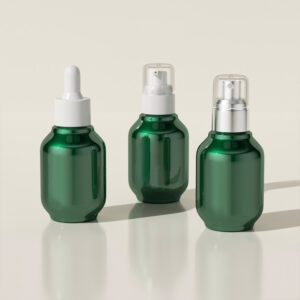
Nachrichten & Blog
Großartige Leistungen in der Wirtschaft werden nie von einer einzelnen Person erbracht. Sie werden von einem Team von Menschen vollbracht. Wir haben diese dynamische Gruppe von Menschen
Bei der Gestaltung von Parfümflaschen sind Parfümdeckel aus Holz wegen ihrer einzigartigen Textur und ihres natürlichen Charmes sehr beliebt. In diesem Artikel werden 10 Holzarten, die üblicherweise für Parfümkappen verwendet werden, wie Esche, Buche und Eiche, eingehend analysiert und hinsichtlich ihrer physikalischen Eigenschaften, Vor- und Nachteile sowie der Preisspanne näher erläutert. Außerdem werden konkrete Anwendungsfälle mit Datenvergleichen kombiniert, um Entwicklern und Einkäufern von Parfümflaschen einen umfassenden und professionellen Leitfaden für die Materialauswahl an die Hand zu geben, der dazu beiträgt, Parfümverpackungsmaterialien mit Qualität und Eigenschaften zu schaffen.
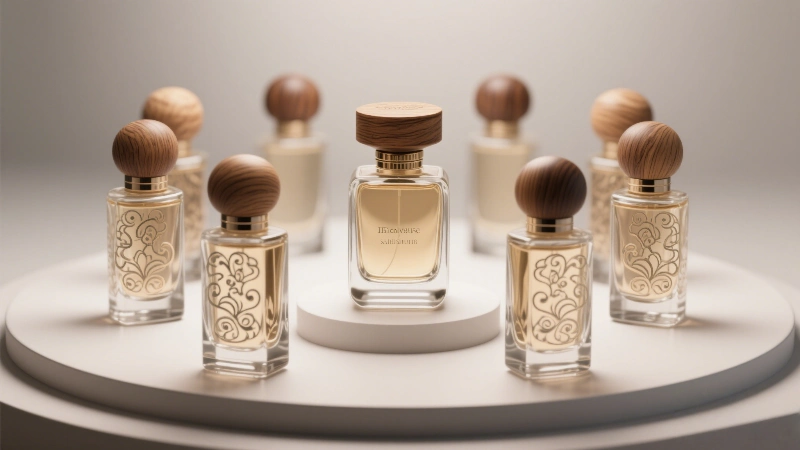
| Name des Holzes | Wichtigste Merkmale | Vorteile | Benachteiligungen | Preisspanne (USD/m³) | Anwendbare Markenpositionierung |
|---|---|---|---|---|---|
| Eschenholz | Die lufttrockene Dichte beträgt ca. 0,6 - 0,72 g/cm³, hohe Dichte, hohe Festigkeit und Härte, wilde und klare Textur, taktil, geruchsneutral | Hohe Tragfähigkeit, nicht leicht zu verformen; schöne und einzigartige Textur; breite Palette von Anwendungen | Preis ist relativ teuer | 580 – 860 | Mittleres bis gehobenes Segment |
| Buchenholz | Die lufttrockene Dichte beträgt etwa 0,7 - 0,8 g/cm³, klare Textur, gleichmäßige Textur, weiche Farbe, schweres und festes Material, gute Schlagfestigkeit | Hohe Stabilität, feine und zarte Textur | Einheimischer Holzeinschlag ist verboten, man ist auf Importe angewiesen, hohe Preise | 750 – 1000 | Nische High-End |
| Eiche | Die lufttrockene Dichte beträgt ca. 0,6 - 0,75g/cm³, der Querschnitt hat eine ausgeprägte bergförmige Holzmaserung, eine feste Textur, gute Zähigkeit und eine einfache Verarbeitung. | Schöne und natürliche Textur, kann zu einer Vielzahl von Formen verarbeitet werden, einzigartige Textur | Teurer Preis, Nischenanwendung | 650 – 950 | Mittleres bis gehobenes Segment, das einen Nischenstil verfolgt |
| Walnuss | Das Splintholz ist milchig weiß, das Kernholz ist reich an Farbe, mit deutlichen Farbunterschieden, feiner Textur, meist dunklen Farben | Die Holzmaterialien unterscheiden sich deutlich voneinander und unterstreichen die Einzigartigkeit und die hochwertige Qualität der Produkte. | Teuer | 1200 – 1750 | High-End |
| Palisanderholz | Lufttrockengewicht 0,82 - 0,94g/cm³, rotbraunes Kernholz, dichtes und hartes Material, resistent gegen Eintauchen und Abnutzung, lang anhaltender Duft, exquisite Muster | Hervorragende Qualität, Verbesserung von Produktqualität und -wert | Langer Wachstumszyklus, extrem hoher Preis | Über 2200 | Oberer Luxus |
| Gummiholz | Lufttrockene Dichte ca. 0,6 - 0,68g/cm³, elegante Farbe, schöne Textur, geringe Schrumpfung, gute Bearbeitungs- und Veredelungsleistung | Niedriger Preis, gute Verarbeitungsleistung | Das Material ist leicht und weich, kann sich leicht verfärben, von Insekten angefressen werden, verrotten und verformen. | 300 – 500 | Low-End |
| Lotusholz | Die Dichte im lufttrockenen Zustand beträgt ca. 0,6 - 0,73 g/cm³, das Material ist hart, hellgrau, die Textur ist gerade, dauerhaft, korrosionsbeständig und verschleißfest. | Günstiger Preis, hohe Praktikabilität | Das Material und das Erscheinungsbild sind gewöhnlich, und es ist schwierig, hochwertige Anforderungen zu erfüllen. | 250 – 350 | Low-End |
| Ahornholz | Die lufttrockene Dichte beträgt etwa 0,55 - 0,65 g/cm³, die Textur ist schön und gleichmäßig. | Moderater Preis, geeignet für helles Design | Derzeit gibt es nur wenige Marken | 450 – 650 | Marken, die auf helle Stile setzen |
| Bambusholz | Hohe Luftfeuchtigkeit, nicht leicht zu schimmeln in trockener Umgebung, leicht zu schimmeln, wenn die Luftfeuchtigkeit 20% übersteigt, leicht zu vermehren Insekten, wenn nicht behandelt | Natürlich und umweltfreundlich, günstiger Preis | Erfordert spezielle Anti-Mold-Behandlung, hohe Verarbeitungsanforderungen | 280 – 450 | Marken, die einen natürlichen Stil verfolgen und auf die Kosten achten |
| Kiefernholz | Luftgetrocknete Dichte etwa 0,4 - 0,5 g/cm³, natürliche Textur, weiches Material | Erschwinglicher Preis, offensichtlich natürlicher Stil | Weiche Textur, schlechte Haltbarkeit und Aussehen | 180 – 280 | Marken, die einen einfachen und natürlichen Stil verfolgen und über ein begrenztes Budget verfügen |
Eschenholz nimmt eine wichtige Stellung im Bereich der hölzernen Parfümdeckel ein. Seine hohe Dichte verleiht ihm eine ausgezeichnete Festigkeit und Härte, so dass es größerem Druck standhalten kann und sich nicht so leicht verformt. Professionellen Tests zufolge liegt die lufttrockene Dichte von Eschenholz bei etwa 0,6 - 0,72 g/cm³ und damit weit über der von vielen anderen Hölzern. Seine einzigartige Textur ist wild und klar, und Sie können die Höhen und Tiefen der Maserung deutlich spüren, wenn Sie es mit den Händen berühren. Diese natürliche Note verleiht der Parfümkappe eine andere Textur. Gleichzeitig ist Eschenholz aufgrund seiner Geruchlosigkeit in vielen Bereichen beliebt, insbesondere auf dem Markt für Kindermöbel, wo seine Sicherheit und seine umweltfreundlichen Eigenschaften sehr geschätzt werden. Bei der Verwendung von Parfümkappen weist Eschenholz in der Regel eine helle Farbe auf. Zu den üblichen Behandlungsmethoden gehören das Aufsprühen von Lack, um die ursprüngliche Holzfarbe beizubehalten, oder die Verwendung von Farbkorrekturlack, um einen dunklen Effekt zu erzielen, der den Designanforderungen verschiedener Marken entspricht. Als mittel- bis hochwertiges Holz ist der Preis von Eschenholz jedoch relativ hoch, mit einem Preis von etwa $580-860 pro Kubikmeter, was auch dazu führt, dass die Marken, die sich für Parfümkappen aus Eschenholz entscheiden, oft den mittel- bis hochwertigen Markt positionieren.
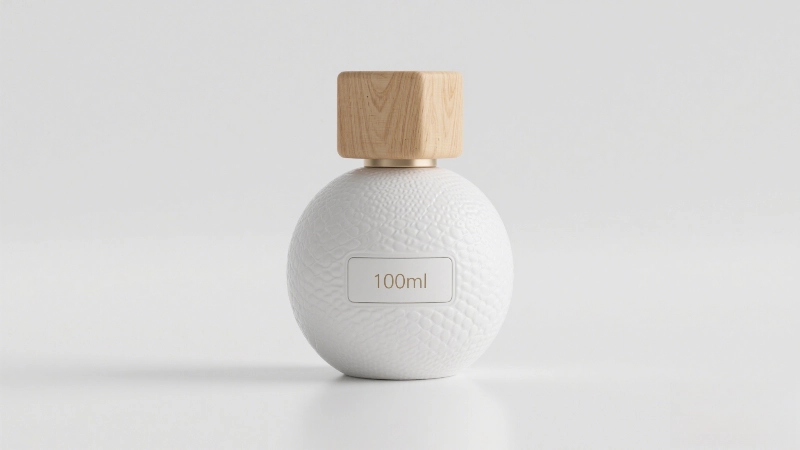
Buchenholz hat eine klare Struktur, eine gleichmäßige Textur, eine weiche Farbe, ein schweres und festes Material und eine ausgezeichnete Schlagfestigkeit. Seine lufttrockene Dichte beträgt etwa 0,7-0,8 g/cm³, was Buchenholz eine hervorragende Stabilität verleiht. Da die Buche jedoch auf der nationalen Liste der geschützten Bäume der zweiten Stufe steht, ist der Holzeinschlag in China verboten. Derzeit wird Buchenholz auf dem Markt hauptsächlich importiert, was auch zu seinem hohen Preis von etwa $750-1000 pro Kubikmeter führt. Die Textur der Buche ist zart, und bei Berührung ist keine offensichtliche Textur zu erkennen. Dieses exquisite Gefühl verleiht ihr einen einzigartigen Charme bei der Anwendung von Produkten wie Aromatherapiebezügen. Aufgrund der Beschränkungen der Importkanäle und der hohen Kosten eignen sich Parfümbezüge aus Buche jedoch eher für hochwertige Nischenmarken, die auf Qualität und Einzigartigkeit Wert legen.
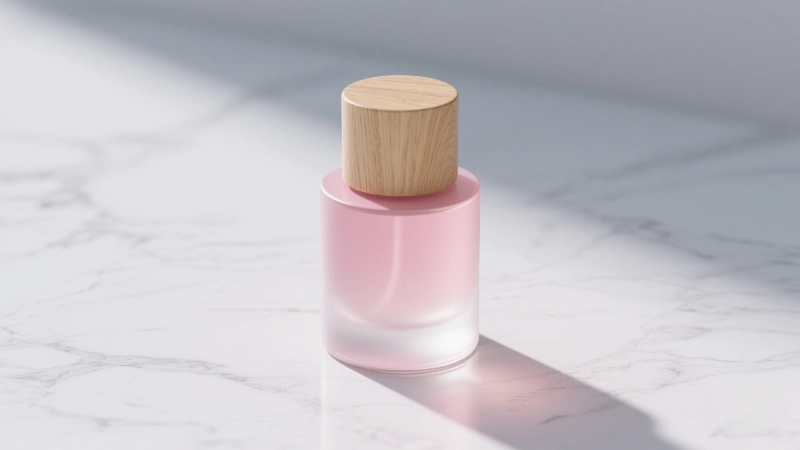
Das Eichenholz hat eine ausgeprägte bergförmige Maserung, eine schöne und natürliche Struktur und ist sehr dekorativ. In Bezug auf die Leistung hat Eiche eine solide Textur und eine gute Zähigkeit. Es ist leicht zu verarbeiten und kann je nach Designanforderungen in verschiedene gebogene Formen gebracht werden, was dem Parfümdeckel ein einzigartiges Design verleiht. Die grobe Textur und die groben Poren verleihen dem Holz eine einzigartige Textur. Die lufttrockene Dichte von Eichenholz beträgt etwa 0,6-0,75 g/cm³, und der Preis ist relativ teuer, etwa $650-950 pro Kubikmeter. Obwohl es sich bei der Verwendung von Parfümflaschenverschlüssen und Aromatherapieflaschenverschlüssen um eine Nischenwahl handelt, ist es zweifellos eine ideale Wahl für Marken, die helle Farben und natürliche Farben mögen und Nischenstile verfolgen, und kann Marken helfen, ein einzigartiges Produktimage zu schaffen.
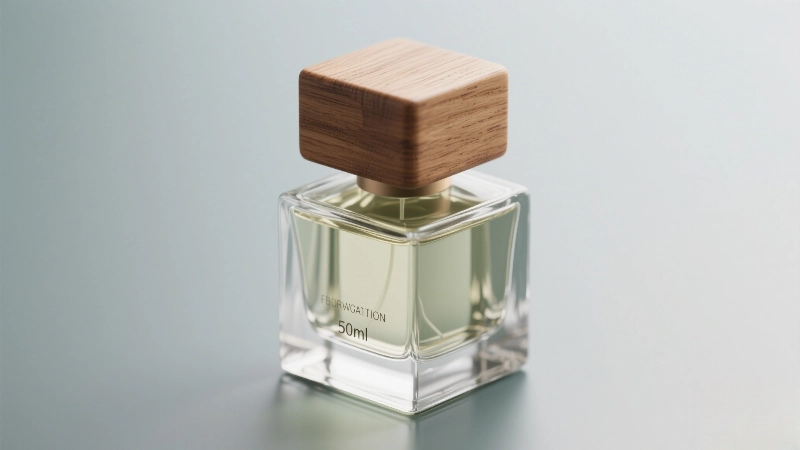
Die Farbe der Walnuss ist sehr charakteristisch. Der Splint des Holzes ist milchig-weiß, und das Kernholz reicht von hellbraun bis dunkelschokoladenfarben. Gelegentlich können violette und dunklere Streifen auftreten, wodurch ein und dasselbe Stück Holz deutliche Farbunterschiede aufweist. Die Textur ist zart und die Gesamtfarbe ist überwiegend dunkel. Diese einzigartigen Farb- und Texturunterschiede machen den Charme der Walnuss aus. Viele Parfümmarken wählen Walnussholz für die Herstellung von Parfümkapseln, weil die unterschiedlichen Eigenschaften des Holzes jede Charge einzigartig machen und die Einzigartigkeit und die hohe Qualität des Produkts unterstreichen können. Preislich gesehen ist Walnuss mit einem Preis von etwa $1.200-1.750 pro Kubikmeter das teuerste der vier in diesem Artikel vorgestellten Hölzer. Der hohe Preis ist auch dafür verantwortlich, dass es hauptsächlich für hochwertige Parfümmarken verwendet wird.
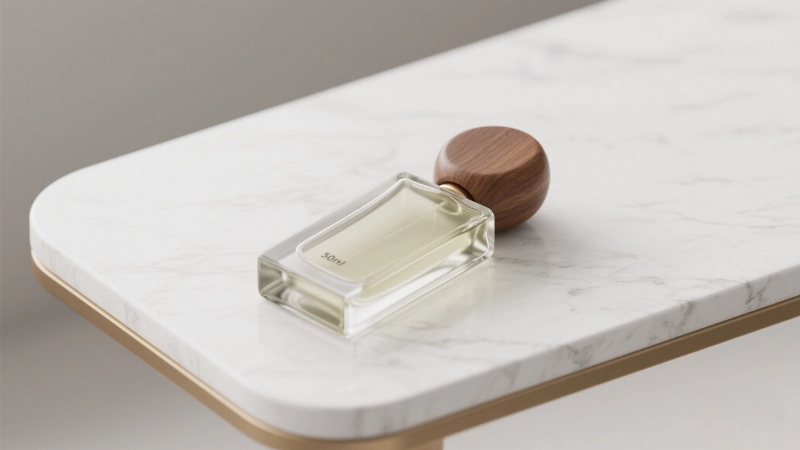
Rosenholz ist eine der wichtigsten Aufforstungsbaumarten in Hainan, China. Es hat einen langen Wachstumszyklus und braucht im Allgemeinen 7-8 Jahre, um nach der Pflanzung Kernholz zu bilden. Das Kernholz ist rötlich-braun, dicht und hart und hat eine lufttrockene Dichte von 0,82-0,94 g/cm³. Es ist resistent gegen Eintauchen und Abnutzung, bricht und verzieht sich nicht und verströmt einen lang anhaltenden Duft. Die Muster bilden auf natürliche Weise verschiedene exquisite Muster. Es ist ein hochwertiges Material für die Herstellung von hochwertigen Mahagonimöbeln, Handwerksprodukten usw. Im Bereich der Parfümdeckel sind die Marken, die sich für Rosenholz entscheiden, zweifellos die qualitätsbewusstesten. Die Seltenheit und die hervorragende Qualität von Palisanderholz können die Qualität und den Wert von Parfümprodukten erheblich steigern. Allerdings ist es auch recht teuer, mit einem Preis von mehr als $2.200 pro Kubikmeter ist es ein Holz der Luxusklasse.
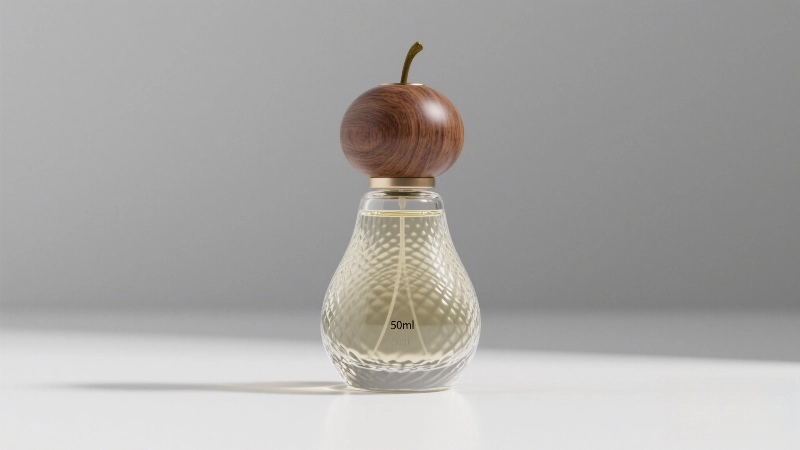
Rubberwood hat eine helle Farbe, eine schöne Textur, eine geringe Schrumpfung, eine leichte bis mittlere Dichte und eine lufttrockene Dichte von etwa 0,6 - 0,68 g/cm³. Es hat gute mechanische Verarbeitungs- und Bearbeitungseigenschaften. Im Vergleich zu Eichenholz ist Gummiholz jedoch leichter und weicher und neigt zu Verfärbungen, Insektenbefall und Fäulnis. In der Praxis neigen Parfümkappen aus Kautschukholz zu Verformungen, weshalb Perfume Dynamic sie nicht für hochwertige Parfümflaschenkappen empfiehlt. Auf dem Low-End-Markt ist Kautschukholz jedoch aufgrund seines geringen Preisvorteils eine der Optionen zur Kostenkontrolle geworden.
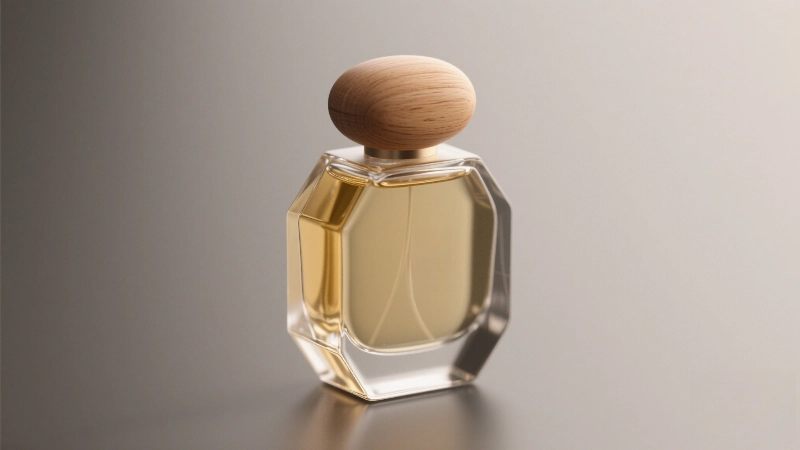
Lotusholz ist hart, hellgrau und hat eine gerade Textur. Das Holz ist dauerhaft, korrosionsbeständig und verschleißfest. Seine lufttrockene Dichte beträgt etwa 0,6 - 0,73 g/cm³. Obwohl seine Leistung nicht so gut ist wie die einiger mittel- bis hochpreisiger Hölzer, hat es seinen einzigartigen Anwendungswert auf dem Low-End-Markt. Ahorn ist mit einem Preis von etwa $250-380 pro Kubikmeter billig und wird häufig für die Herstellung von preisgünstigen Parfümkappen verwendet, bei denen es auf die Kosten ankommt. Aufgrund seines relativ einfachen Materials und Aussehens ist es jedoch schwierig, die Qualitäts- und Designanforderungen von Marken des mittleren bis oberen Marktsegments zu erfüllen.
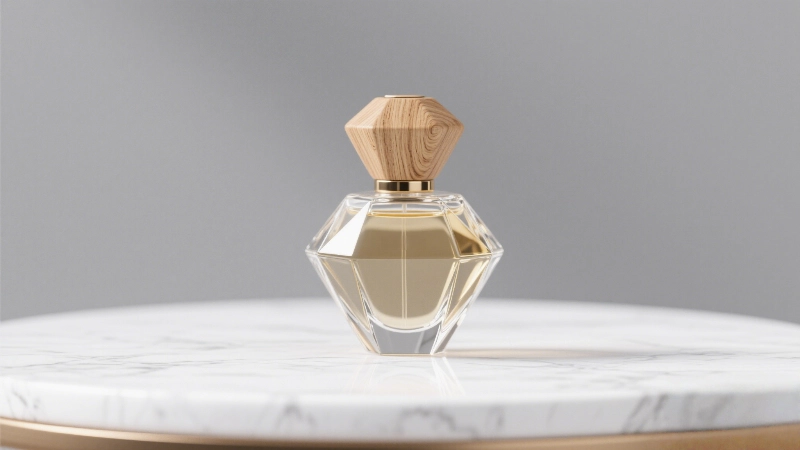
Ahorn hat in den letzten zwei Jahren allmählich an Aufmerksamkeit gewonnen, insbesondere bei Marken, die helle Farben mögen. Ahorn hat eine schöne und gleichmäßige Textur, und seine luftgetrocknete Dichte beträgt etwa 0,55 bis 0,65 g/cm³. Obwohl es relativ wenige Marken gibt, die Ahorn für die Herstellung von Parfümkappen verwenden, wird erwartet, dass Ahorn eine wichtigere Position auf dem Markt für Parfümkappen aus Holz einnehmen wird, da die Vorliebe der Verbraucher für helle Produkte zunimmt. Sein Preis ist moderat und liegt bei etwa $450-650 pro Kubikmeter, was den Marken eine breitere Auswahl ermöglicht.
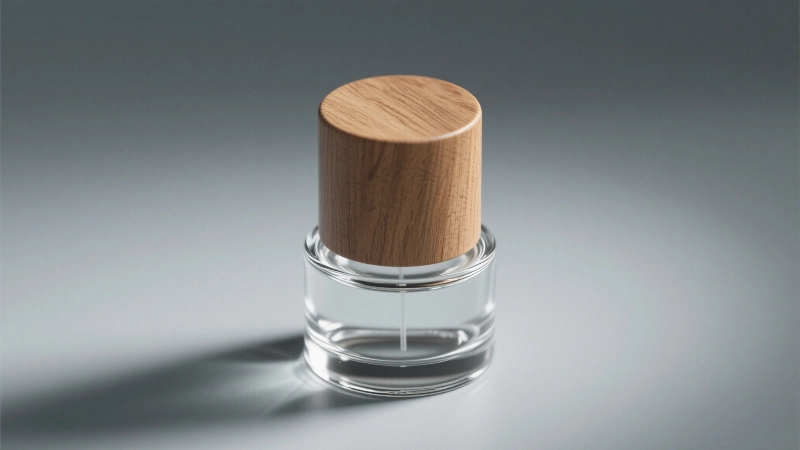
Bambus- und Holzprodukte haben eine hohe Luftfeuchtigkeit und sind in einer trockenen Umgebung nicht leicht zu schimmeln, aber wenn die Luftfeuchtigkeit über 20% liegt, steigt das Schimmelrisiko erheblich. Zugleich sind Bambus und Holz, die nicht sterilisiert und mit Holzkohle gegrillt wurden, anfällig für Insekten. Daher empfiehlt Perfume Dynamic, dass bei der Verwendung von Bambus und Holz zur Herstellung von Abdeckungen für Parfümmaschinen frischer Bambus und frisches Holz mit einem Schimmelschutzmittel behandelt werden müssen, und dass karbonisierter Bambus eine bessere Verarbeitungsmethode ist. Bambus und Holz sind natürlich und umweltfreundlich, und der Preis ist relativ niedrig, etwa $285-450 pro Kubikmeter. Es eignet sich für Marken, die einen natürlichen Stil verfolgen und auf Kostenkontrolle achten, aber seine besonderen Eigenschaften müssen bei der Verarbeitung und Verwendung beachtet werden.
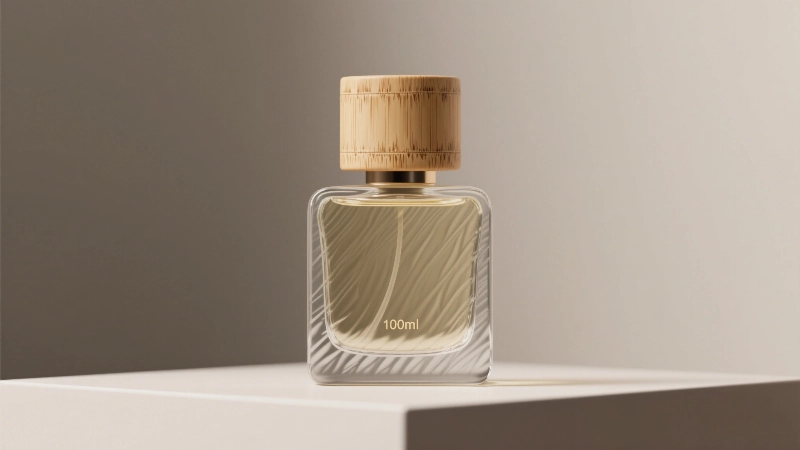
Kiefernholz ist ein gängiges Holz im täglichen Leben. Es hat eine natürliche Textur und ist relativ weich. Die lufttrockene Dichte beträgt etwa 0,4-0,5 g/cm³. Kiefernholz ist gelegentlich auf den Deckeln von Aromatherapieflaschen zu sehen. Einige Marken verzichten auf eine Lackierung, um die ursprüngliche natürliche Struktur zu erhalten. Kiefernholz ist mit einem Preis von etwa $180-285 pro Kubikmeter relativ erschwinglich und eignet sich für Marken, die einen einfachen und natürlichen Stil mit begrenztem Budget verfolgen. Aufgrund seiner weichen Textur ist es jedoch in Bezug auf Haltbarkeit und Schönheit einigen anderen Hölzern leicht unterlegen.
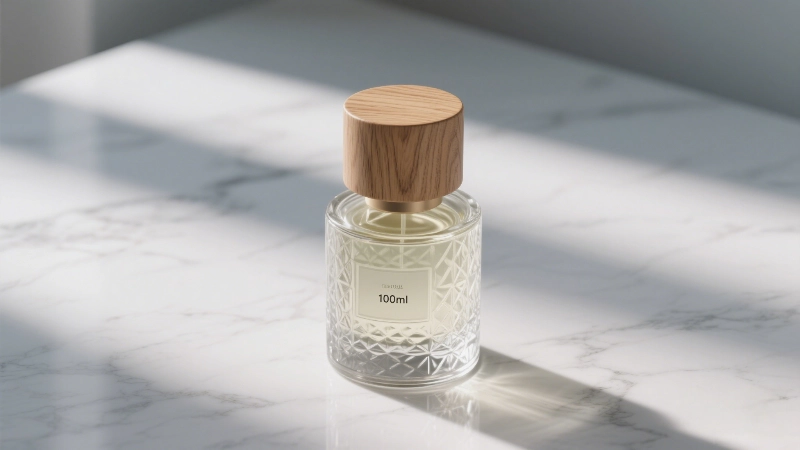
Es gibt eine Vielzahl von Holzarten für Parfümdeckel, und jedes Holz hat seine eigenen einzigartigen Eigenschaften, Vor- und Nachteile und seine eigene Preisspanne. Die Textur eignet sich für Parfümmarken des mittleren bis oberen Marktsegments und kann die Qualität und den Mehrwert der Produkte verbessern; Walnuss und Rosenholz sind aufgrund ihrer Seltenheit und Einzigartigkeit zum Symbol für Luxusparfüms des oberen Marktsegments geworden; Gummi- und Lotusholz spielen eine wirtschaftliche und praktische Rolle im unteren Marktsegment; Ahorn, Bambus und Kiefer bieten Marken auch eine individuellere und differenziertere Auswahl. Bei der eigentlichen Materialauswahl sollten Entwickler und Einkäufer von Parfümflaschen Faktoren wie Markenpositionierung, Designanforderungen und Kostenbudget umfassend berücksichtigen, um das am besten geeignete Holz auszuwählen und Parfümverpackungsmaterialien zu schaffen, die der Marktnachfrage entsprechen und einzigartig sind.
Yafeng Packaging ist ein professionelles Unternehmen, das seit vielen Jahren in der Verpackungsbranche tätig ist und sich auf die Forschung und Entwicklung, Produktion und kundenspezifische Anpassung von Parfümflaschen aus Holz und verschiedenen hochwertigen Verpackungsprodukten konzentriert. Mit einer ausgereiften Prozesstechnologie und einem strengen Qualitätskontrollsystem hat Yafeng Packaging kundenspezifische Lösungen für Holzflaschenverschlüsse für viele bekannte Parfümmarken angeboten und sich einen guten Ruf in der Branche erworben
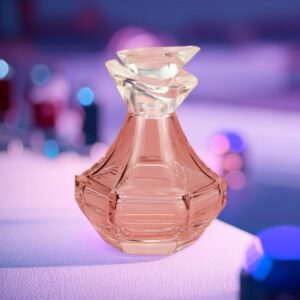
Verbessern Sie Ihr Verpackungsdesign mit Verpackungsmaterial aus Glas. Erfahren Sie in unserem informativen Leitfaden, wie Sie einen matten Look erzielen.
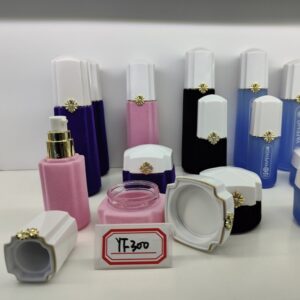
Entdecken Sie das elektrostatische Beflockungsverfahren für Verpackungen, das kosmetische Glasflaschen mit luxuriösen Texturen, leuchtenden Farben und umweltfreundlichen Designs für Premiumprodukte veredelt.
Informieren Sie sich über individuelle und Standardflaschen für Hautpflegeverpackungen. Erfahren Sie in diesem ausführlichen Leitfaden, wie die Lösungen von Yafeng die Markenidentität, Qualität und Effizienz steigern.
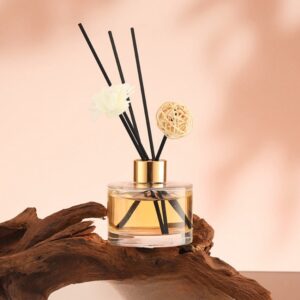
Entdecken Sie die Welt der Rohrdiffusoren und ätherischen Öle! Erfahren Sie, wie Sie die beste Glasflasche, das beste Schilfrohr und die besten Öle für ein entspannendes, aromatisches Zuhause auswählen.
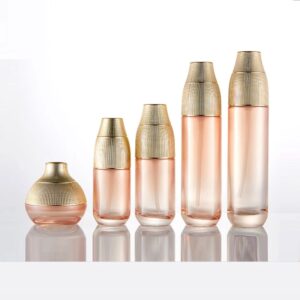
Erkunden Sie die Feinheiten der Glasflaschenformherstellung, von Typen und Verfahren bis hin zu technischen Unterschieden, und erfahren Sie mehr über Innovationen, die Präzision, Skalierbarkeit und Kosteneffizienz fördern.
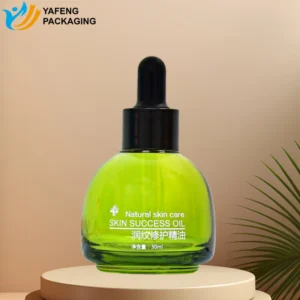
Entdecken Sie, wie die Sprühbeschichtung Hautpflege- und Parfümverpackungen aufwertet, indem sie das Erscheinungsbild, die Markenidentität, die Haltbarkeit und die Sicherheit mit fortschrittlicher Technologie verbessert.
Informieren Sie sich über individuelle und Standardflaschen für Hautpflegeverpackungen. Erfahren Sie in diesem ausführlichen Leitfaden, wie die Lösungen von Yafeng die Markenidentität, Qualität und Effizienz steigern.
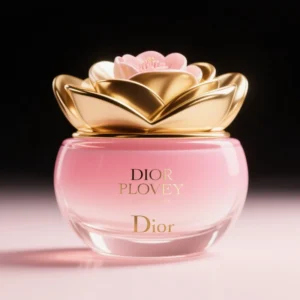
Entdecken Sie, wie Farbverlaufsspray kosmetische Glasflaschen verwandelt, das Markenimage verbessert und die Produktattraktivität steigert - mit Expertenwissen von Yafeng Packaging.
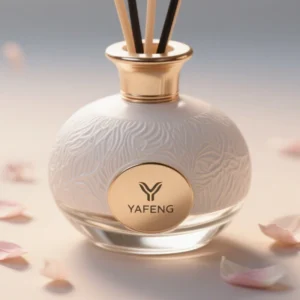
Entdecken Sie, wie die Rattan-Aromatherapie funktioniert und warum Glasflaschen die beste Wahl für einen lang anhaltenden Duft, Sicherheit und eine nachhaltige, elegante Verpackung sind.
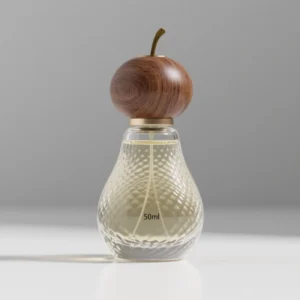
Entdecken Sie die 10 besten Hölzer für Parfümkappen und vergleichen Sie Beschaffenheit, Vor- und Nachteile sowie den Preis, damit Sie das beste Material für eine stilvolle, hochwertige Verpackung wählen können.
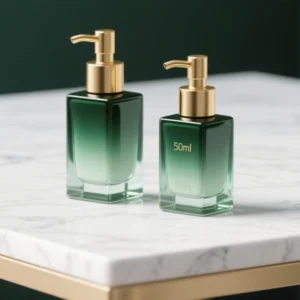
Informieren Sie sich über kosmetische Glasflaschen - Sicherheit, ökologische Vorteile, Typen, Färbung, Formkosten, MOQ und Produktionstipps - in einem sachkundigen, datenreichen Leitfaden.
WhatsApp uns